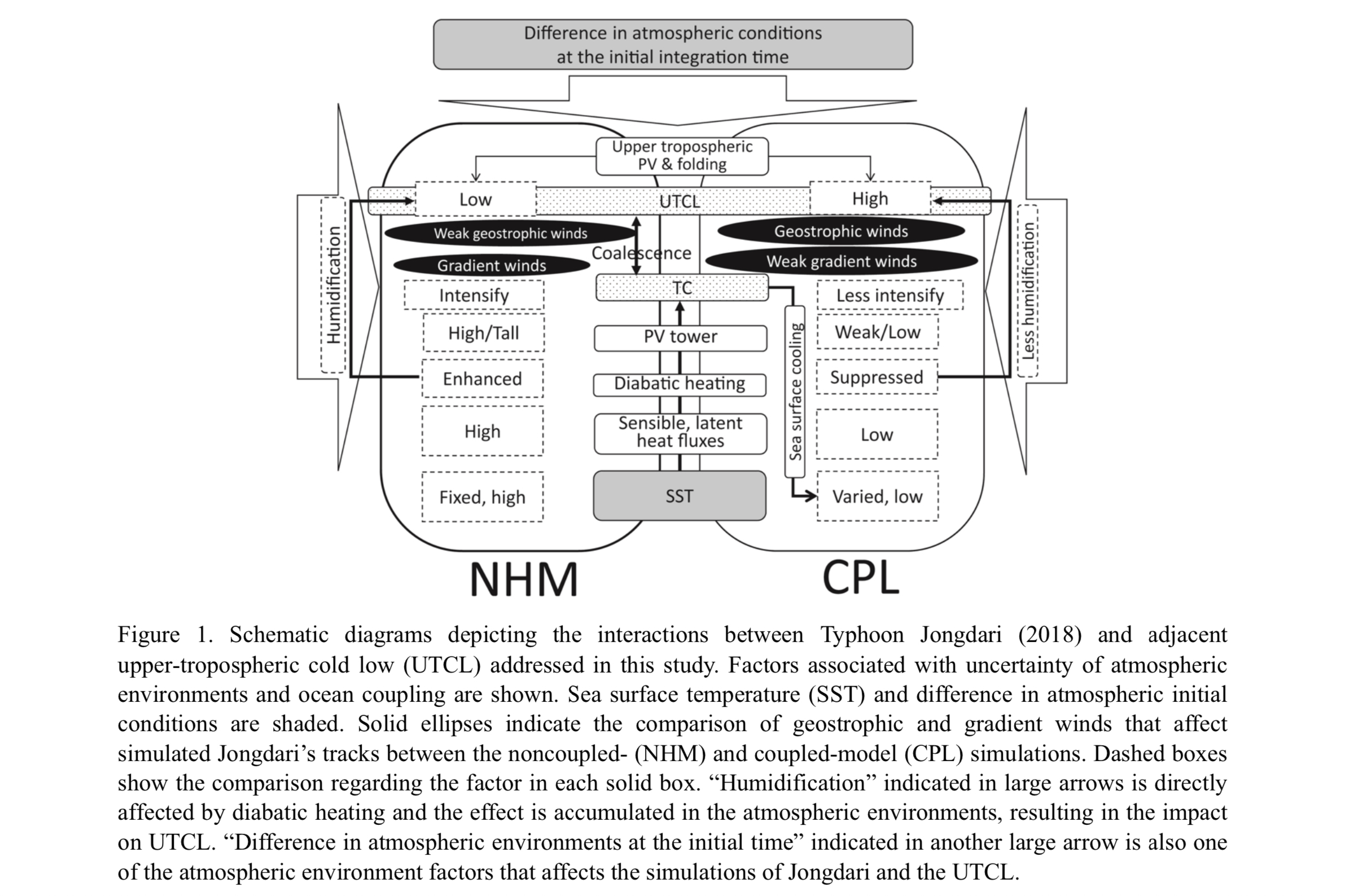Graphical Abstract
Wada, A., W. Yanase, and K. Okamoto, 2022: Interactions between a tropical cyclone and upper-tropospheric cold-core lows simulated by an atmosphere-wave-ocean coupled model: A case study of Typhoon Jongdari (2018). J. Meteor. Soc. Japan, 100,387-414.
https://doi.org/10.2151/jmsj.2022-019.
Graphical Abstract
Published
Plain Language Summary: To investigate the effects of atmosphere-ocean interactions and interactions between upper-tropospheric cold lows (UTCLs) and Typhoon Jongdari (2018) on the unusual Jongdari’s track, numerical simulations were conducted with a 3-km-mesh nonhydrostatic atmosphere model and an atmosphere-wave-ocean coupled model, using different initial conditions created by adopting different initial times. This study demonstrated the effects of ocean coupling and atmospheric initial conditions on the simulation of Jongdari and discussed their mechanism.
Highlights:
- Ocean coupling helped sustain the upper-tropospheric potential vorticity associated with adjacent upper-tropospheric cold low and weakened the column of elevated potential vorticity associated with Jongdari.
- A larger difference in the atmospheric initial conditions had a stronger influence on simulated track and intensity of both Jongdari and the upper-tropospheric cold low than the effects of ocean coupling.
- The steering flow of Jongdari was affected by the geostrophic-balanced cyclonic circulation created by the upper-tropospheric cold low.







